Has the breathtaking coloration of a peacock’s feathers ever caught your attention? Undoubtedly, bird lovers around the world are fascinated by peacocks and Birds Similar to Peacocks because of their showy displays and wonderfully colored feathers.
Other birds also possess stunning vivid colors, flamboyant patterns, or showy behaviors. The following article covers birds that are similar to peacocks in looks, actions.
Key Takeaways:
- Discover a variety of birds with vibrant plumage or behaviors akin to peacocks.
- Learn about their habitats, physical traits, and cultural roles.
- Explore detailed comparisons through tables and lists for quick insights.
- Understand why these birds captivate birdwatchers and nature lovers.
- Find answers to common questions about peacock-like birds.
Why Peacocks Are So Unique?
Peacocks exhibit a remarkable courtship display through their shimmering tail feathers, or train, which they fan out to attract mates. The Indian peafowl (Pavo cristatus) is the most iconic and is a member of the pheasant family (Phasianidae).
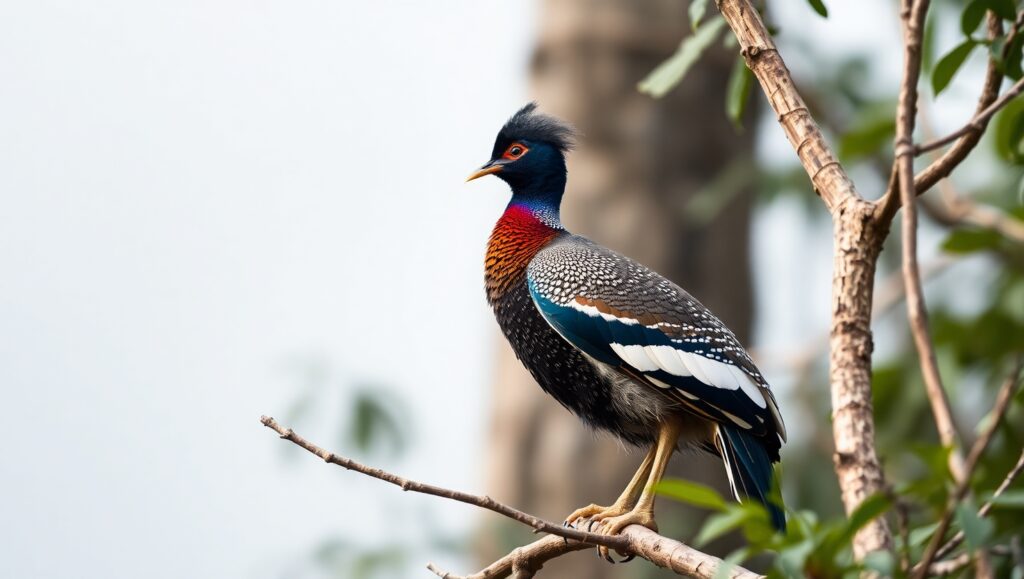
In addition to vibrant blues, greens, and purple peacocks possess other striking attributes, making them mesmerising figures across cultures. Aside from looks, they represent pride and beauty. What other birds are alike? Some share vivid colors while others mimic elaborate courtship displays, share of the same family, and some even belong to the same family.
Top 12 Birds Similar to Peacocks:
Diving into the world of peacock-like birds reveals a stunning array of species. Below, we explore the most notable ones, detailing their traits, habitats, and why they evoke the peacock’s charm.
1. Pheasants: The Peacock’s Closest Relatives
Fellow family members of birds of paradise, with their commobs-like posture and iconic strut, proudly exhibit some of the most beautiful feathers in the world. Their plumage of the like Gold and Lady Amherst’s pheasant has vigorous flowing tails which makes them truly captivating.
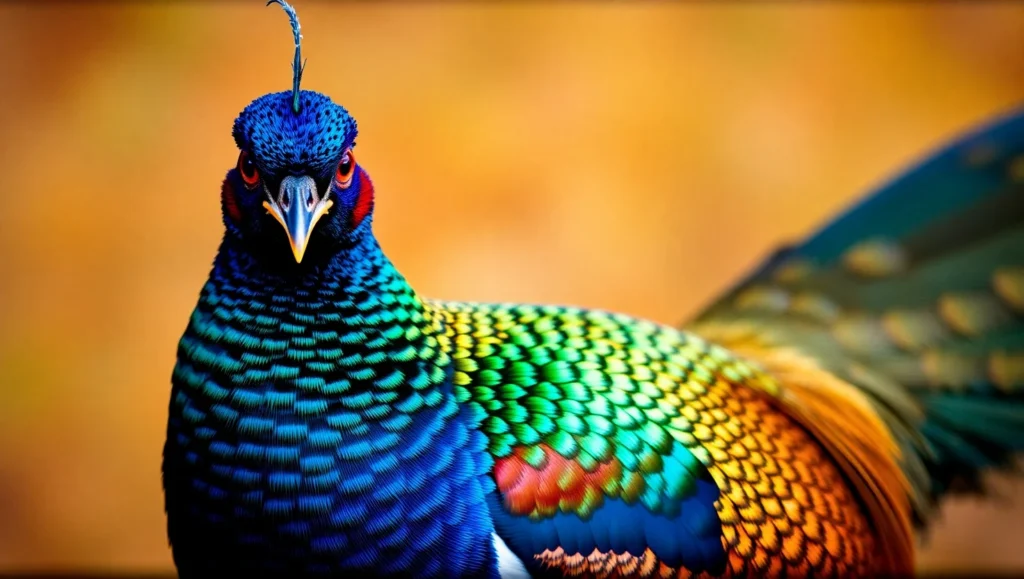
Golden Pheasant:
Stretching throughout the China’s haughty forests, the golden glued in with red and blue iridescent jacket along brings life to its area. Gains head struts with a short elegant tail dancing slowly as cuts the air while hanging from decorations, captivating the attention of the women, and competing with the peacocks.
Lady Amhers Pheasant:
Along and athwart Lady Amherst’s Pheasant or Cap is regarded as amherstteilis. It’s bound to excite the people of Asia like China and Myanmar, with peacock shows. Proclaims sitting atop of other birds, boasting a jett tail crowded with brawn depicting her stalked out back of red and expecther as well as Perched perched over ladies of gleaming blue fabric round collar.
2. Birds of paradise: Tropical hMervals
Apurting glimpses of the vibrant cardiac stuttering feather/animation jolts the heartbeat in additional parts out of the US and uut- of New Zealand, marking their coronation ubiquitous in its intensity brightness. While having gleaming plumage is a famous characteristic of the creatures, the way they move is mesmerising to witness akin organizing colorful arrangements on flag day in comparison to eagles.
Raggiana Bird of Paradise:
With its orange and green plumage, the Raggiana Bird of Paradise (Paradisaea raggiana) stands out in its habitat. Male Raggiana Birds of Paradise strut while jumping, shaking, and gloriously showing off their feathers You might say their performance is similar to a peacock’s display. They reside in rainforests, where vivid colors of their plumage can be seen amidst the vegetation.
Wilson’s Bird of Paradise:
Wilson’s Bird of Paradise (Cicinnurus respublica), the smallest yet most vibrant of its kind, dazzles with a striking mix of red, blue, and yellow. Its bare blue head and curled tail feathers amplify its allure during courtship. Like peacocks, male Wilson’s Birds of Paradise actively clear forest floor patches, creating ‘dance stages’ to perform their courtship rituals.
3. Turacos: Africa’s Colorful Gems
The sub-Saharan region of Africa is home to Turacos, which look like flamboyant peacocks due to their bold green and red feathers. The gem of highlight of turacos is the Great Blue Turaco (Corythaeola cristata), which has an extravagant turquoise crest, a bright red bill, and wings that glimmer in the sunlight.
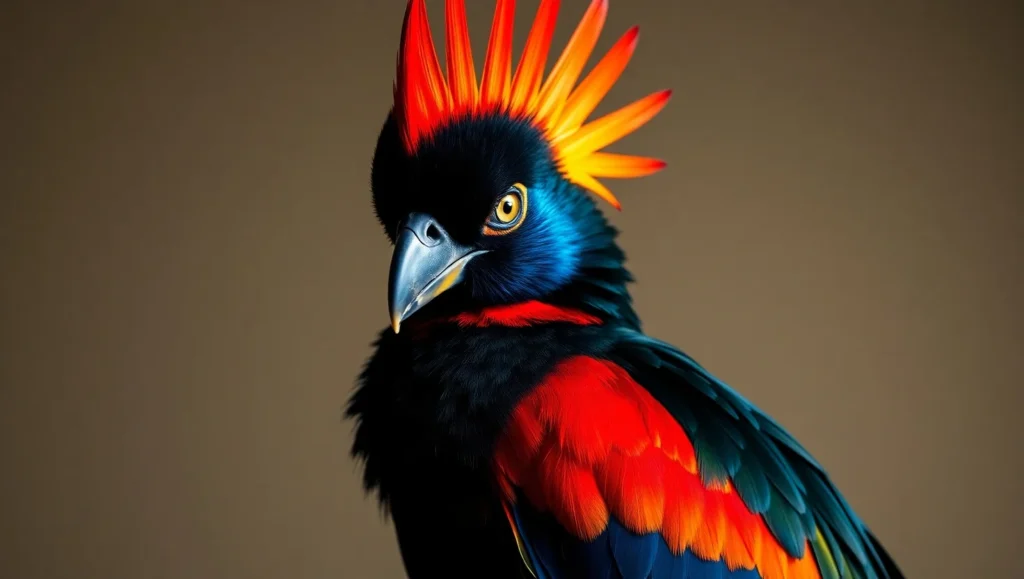
Turacos, unlike peacocks, lack iridescent colors and instead display vibrant hues from pigments like turcocyanin and turacin, which create a distinct, non-iridescent glow. They actively feed on fruits, berries, and occasional insects, expertly blending into the foliage of tropical forest canopies in countries like Uganda and Cameroon. They emit deep, guttural calls to communicate and stake out their territory.
These brightly colored birds make small social groups which they travel in while hopping on branches. Turacos are perceived as messengers or spirits of the forest in to African cultures within which they are part of, which is the direct connection due to their bright colors to the wilderness.
4. Mandarin Ducks: Waterfowl Elegance
Mandarin ducks, often touted as the world’s most colorful waterfowl, are found in East Asia. These small ducks, growing to around 650mm and weighing up to 1kg, exhibit striking orange, green, purple, and white plumage during breeding season along with a red bill and golden ‘whiskers.’ During courtship, males raise their fan-like wing feathers resembling a miniature peacock train to impress the females.
During summers, they can be seen in the wooded wetlands in East Asia like streams and lakes in China, Japan and Russia. They feed on aquatic plants, insects, and small fish. In winters, they migrate towards warmer wetlands and showcase their colorful plumage in spring..
5. Guineafowl: Patterned Charmers
The lively and sociable helmeted guineafowl (Numida meleagris) stands out from other birds with its striking features. Like peacocks, guineafowl sport spotted feathers and intricate patterns, yet their unique blended design sets them apart. They flaunt black plumage adorned with white spots, a vivid blue head, and a bold red neck.
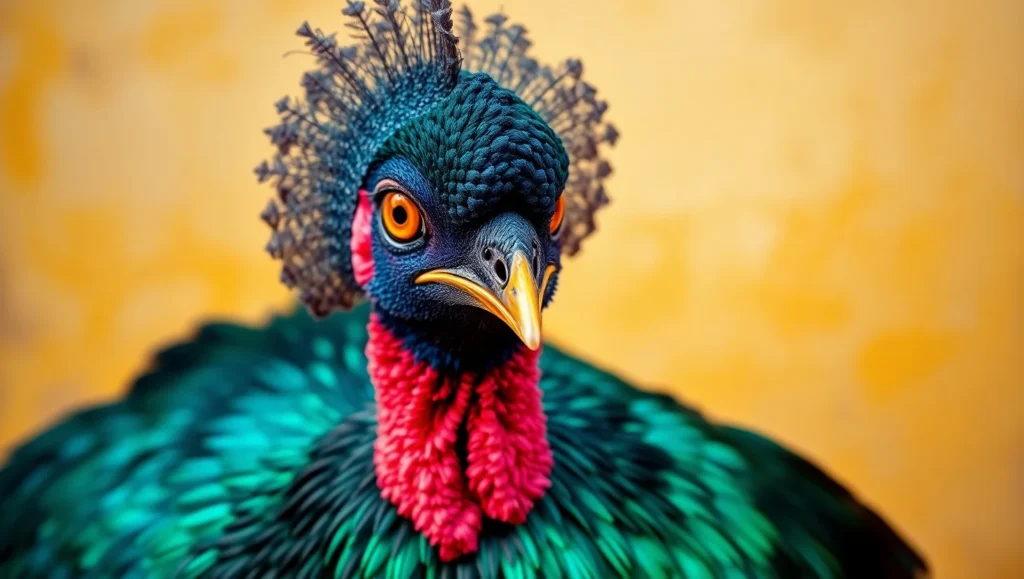
Guineafowl strut in flocks across East and South Africa’s scrublands, foraging for seeds, insects, and lizards. At night, they roost on the edges of trees and bushes, blending seamlessly with earthy tones to dodge predators.
In some African villages, locals raise guineafowl for their startling calls, which alert communities to approaching predators. These birds act as a reliable alarm system, warning of hidden dangers that often go unnoticed.
6. Resplendent Quetzal: Mesoamerica’s Jewel
The quetzals usually preferred by avian admirers, Pharomachrus mocinno, are found in Central America. These birds boast the title of the prettiest bird in Americas due to their flamboyant green and red feathers. The male quetzals certainly strengthen this claim with his three feet long iridescent tail that is covered in green feathers and a scarlet belly.
Rather than waiting around, quetzales indulge themselves in showing their exceptional tails during mating season. One can find these creatures in the humid cloud forests of Meso America, mainly guatemala and costa rica.
Resplendent Quetzals weave their tails seamlessly with hanging vines, rendering their disguise nearly invisible. The Mayans prized quetzals as symbols of wealth, adorning royal headdresses with their vibrant feathers. These sacred birds, tied to the god Quetzalcoatl in some beliefs, embody freedom.
7. Blue Acrobat: The Indian Roller
With an Indian Roller, you get quivers of blue and turquoise on its wings accompanied with a lilac throat and a greenish back which makes it cosmopolitan in beautiful sights, and they do take Indian Rollers Coracias benghalensis as guests. During the courting rituals, acrobatic somersaults of striking wings at mid-air and rolling display is executed by males which looks as superb like peacocks.
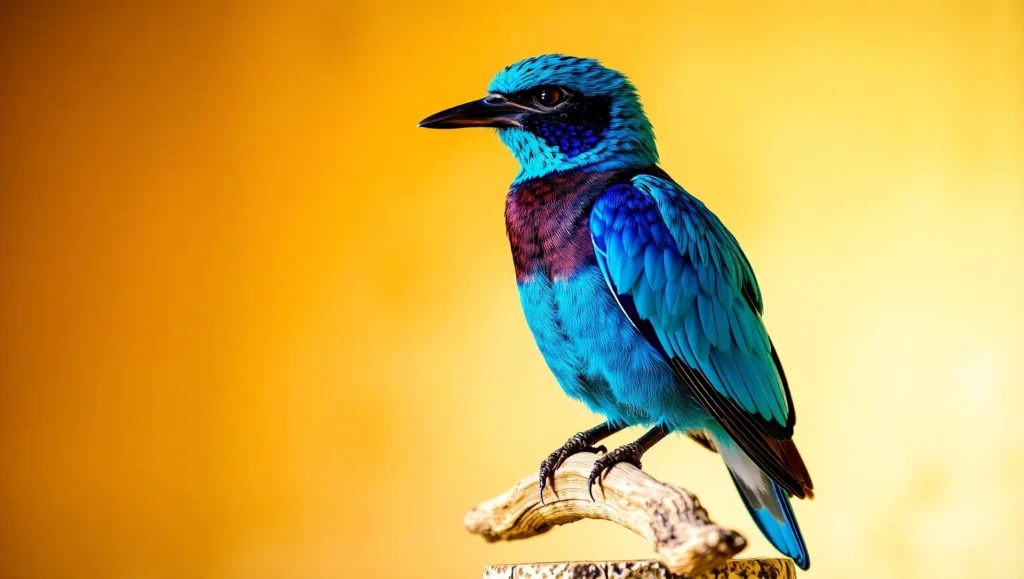
Indian Rollers perch on wires or trees across open farmlands, scrublands, and woodlands in mid-eastern India, diving swiftly to snatch insects like beetles and grasshoppers. Their vibrant colors stand out boldly against the earthy landscapes, creating a striking contrast.
In Indian folklore, Indian Rollers shine as symbols of joy and prosperity, considered bearers of luck. Communities celebrate them during festivals and honor them year-round.
8. Sunbirds: Damselflies of the Flower – Magic Iridescent Wonders
Sunbirds, which live in Africa and Asia, are hard to miss due to their small size and striking colors. Like hummingbirds, sunbirds are also known for their agility. They possess stunning metallic green, blue, and purple feathers that glimmer with light, similar to peacock’s plumage. This can be seen in the Malachite Sunbird (Nectarinia famosa) and Purple Sunbird (Cinnyris asiaticus).
To strut in front of their mate, males display colors during the breeding season, where they sip nectar from vibrant flowers. Furthermore, Males take turns blossoming into vivid beauties and showing off their their compelling great flight and hovering around African and Asian gardens, forests, and savannahs located in Kenya and Indian. In addition to the nectar, these birds also feast on tiny insects using their curved bills.
In Africa, men have associated great elegance with sunbirds, as from the ancient myths, idolizing their beauty and treasures. Their colors are considered gifts from gods which fuels local stories.
9. The Argus Pheasant: A Performer of Patterns
Southeast Asia is home to the Great Argus Pheasant (Argusianus argus), which uses a long tail with eye-like spots stretching up to 6 feet to boast its beauty, similar to the peacock’s train. Males scrape clean portions of the forest floor to set up viewable arenas for mating.
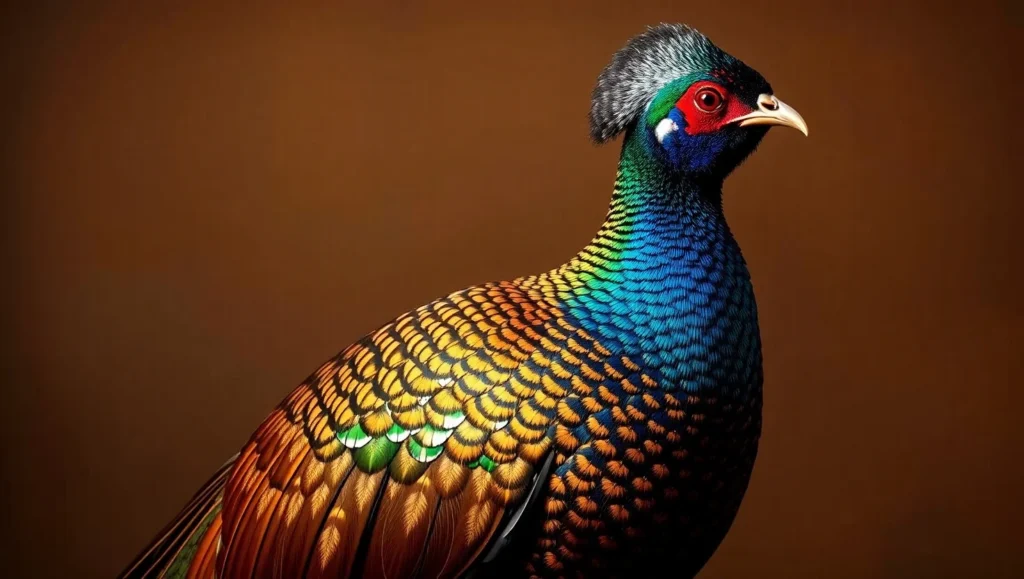
They possess intricate patterns of golden spots, even though their brown plumage is less colorful. They reside in the rainforests of Southeast Asia, particularly in Malaysia and Indonesia, and depend on dense jungles as displays and overgrowth as food, along with vegetation, fruits, and insects. In folklore, its tail patterns are symbols of vigilance and artistry which is why its cultures use them as emblems of patience and beauty.
10. The Lilac Breasted Roller, A Colorful Flier Of Africa
East Africa is home to Lilac-Breasted Roller (Coracias caudatus), a bird marked with a stunning palette of lilac, turquoise and green feathers which along with white chin and yellow underparts set them apart. They are known for rolling and diving imitating the behavior of a peacock strutting, showcasing their colors.
In the savannahs and woodlands of Tanzania and Kenya, East African birds soar high, scanning for insects and small reptiles to feast on. Their vivid colors pop against the grassy landscapes, making them easy to spot. These birds, with their bold presence and striking plumage, rank as safari favorites. In local community stories and art, their vibrant feathers symbolize joy and vitality.
11. Superb Lyrebird: The Mimic with Flair
The Superb Lyrebird (Menura novaehollandiae), native to Australia, captivates with its elegant, lyre-shaped tail and remarkable sound-mimicking skills. Males execute intricate courtship dances in forest clearings, flaunting their striking tail feathers. They skillfully imitate other animals’ calls and even human-made sounds, like chainsaws, showcasing their extraordinary vocal talent.

They inhabit the temperate forests located in Victoria and New South Wales in Australia, where they comb the ground looking for insects, worms, and small reptiles. In Australia, lyrebirds are known as tellers of creativity and nature’s craftsmanship and in folklore celebrate nature’s ingenuity especially in literature and art, and currency.
12. Nicobar Pigeon: The Iridescent Islander
Found in Southeast Asian islands, the Nicobar Pigeon (Caloenas nicobarica) sports iridescent greens, blues, and copper feathers with a short fan-like tail. The bow-like structure of their tail makes them unique. Their shimmering neck feathers create a rainbow effect in sunlight, rivaling peacock feathers in iridescence.
Southeast Asia’s coastal forests and mangroves serve as their habitat, with a preference for democratic s of Andaman and Nicobar Islands in India They feed on seeds , fruits and pets of small invertebrates. Sheter is provided in lush canopies.
Colloquial gestures of cooing and their waddling gait add to their grace. In their culture their feathers are used for ceremonial attire. This ceremony symbolizes the imprint of a spiritual connection along with the sea.
Physical Traits That Define Peacock-Like Birds:
What characteristics make it accurate to say that a bird is ‘similar’ to a peacock? Every heterogenous resemblance either visually or behaviorally is influenced by peacocks’ fundamentally exceptional distinguishing features.
Vibrant Plumage:
Their feathers shimmer in hues of blue, green, red, and gold, captivating onlookers. These striking colors signal robust health and drive competition among mates, a common feature in these species. Peacocks flaunt their vibrant, iridescent colors, a trait shared by pheasants, birds of paradise, and turacos.
Long Ornate Tails:
Undoubtedly, peacock’s tail is no less than flooring; extending up to five feet, it is the birds hallmark. Some birds nicknamed as pheasants and birds of paradise possess extraordinary tails, albeit not with the same drama. These tails have a crucial significance in courtship since they swing or fan to impress potential partners.
Courtship Displays:
Peacocks strut proudly, fanning their tails to attract females, a demanding yet dazzling display. Birds of paradise perform their dances with supreme elegance, while pheasants spread their tails and Mandarin ducks flash their wing feathers, weaving a spectacle of captivating beauty. These displays, as the name implies, leave spectators and witnesses awestruck.
Crests and Head Ornaments:
Crests enhance regal appearance and elegance with a single, splendid flourish. Peacocks aren’t the only ones showcasing this striking headwear. Some turacos and golden pheasants sport vibrant, bare patches on their heads, setting these unique crests apart and earning them stunning appeal.
Cultural Significance of Peacock-Like Birds:
Peacocks and other vibrant birds captivate societies worldwide, each carrying unique cultural meanings. In India, peacocks flaunt their stunning feathers, embodying eternity, grace, and spirituality.
In New Guinea, Birds of Paradise grace ceremonial headdresses, signifying social status and cultural heritage. In East Asia, Mandarin ducks charm with their elegance, symbolizing romantic love, loyalty, and peace, frequently appearing in Chinese and Japanese wedding art and poetry. In Africa, turacos soar as forest messengers or spirits, their vivid colors reflecting the wilderness’s vitality.
The Mayans revered resplendent quetzal feathers as sacred emblems of freedom and wealth, adorning royal headwear. Indian Rollers (Coracias benghalensis), widespread across India, enchant with their beauty, featuring in folklore as harbingers of good fortune and prosperity.
In Australia, superb lyrebirds inspire art and literature with their bold mimicry of other creatures, showcasing extraordinary creativity. On the Andaman and Nicobar Islands, Nicobar pigeons shine in island cultures, their iridescent feathers woven into symbolic traditions.
Frequently Asked Questions (FAQs):
What is the closest relative to the peacock?
The closest relatives to the peacock (Indian peafowl, Pavo cristatus) are pheasants, particularly the Golden Pheasant and Lady Amherst’s Pheasant, all within the Phasianidae family.
What birds are in the peacock family?
The peacock belongs to the Phasianidae family, which includes pheasants (e.g., Golden Pheasant, Argus Pheasant), guineafowl (e.g., Helmeted Guineafowl), turkeys, partridges, and quail.
What is the small bird that looks like a peacock?
The Malachite Sunbird, with its iridescent green and blue feathers, is a small bird resembling a peacock’s vibrant plumage.
What is the grey bird that looks like a peacock?
The Superb Lyrebird, with its greyish plumage and ornate, fan-like tail, resembles a peacock in display and structure.
What is Peafowl vs peacock?
Peafowl refers to the species (male and female); peacocks are male peafowl, known for their colorful tails, while peahens are females with duller feathers.
Why White peacock Rare?
A white peacock is a leucistic Indian peafowl, a rare color variant with white feathers but the same fan-like tail, often bred in captivity.
Conclusion:
Birds similar to peacocks, from pheasants to Nicobar pigeons, dazzle with vibrant colors, ornate tails, and captivating behaviors. Each species, shaped by its unique habitat and cultural role, offers a fresh take on the peacock’s beauty.
Whether you’re a birdwatcher or curious, these birds reveal nature’s creativity. Their conservation needs urge us to protect this artistry. Spot a colorful bird, and you’ll see the peacock’s legacy shine.
